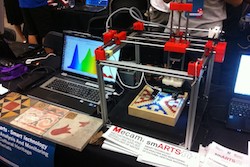Making sense of signals
The world is bombarding us with different intermittent signals from everywhere. These can be audio signals, radio signals, light signals, image signals, seismic signals or even signals defined by space or time. Quantifying these signals and studying them helps us understand the world we live in and has many applications. But doing so requires sophisticated mathematical calculations and algorithms. Although the average person may not know much about this discipline, behind the scenes there are scientists and mathematicians trying to make sense of the 'signal-filled' world we live in. The EU has fully funded the SFSASDA project to help understand these signals, creating more accurate models and giving more meaning to signals. SFSASDA used a complex way to study these signals - a method called scattered data approximation. The method has been used in the past for reconstructing uneven surfaces, modelling terrain, defining fluid interaction and estimating parameters, among other applications. The project's challenge is to make it work for signal processing, a discipline in itself that falls somewhere between mechanical engineering and mathematics. Scattered data approximation has been ideal for computing undefined phenomena in biology, engineering geology and mathematics to name a few. In theory it should work well in defining and approximating the intermittent data that signals emit. After intense testing of different mathematical models, the project successfully developed ways to apply signal analysis in the fields of geophysics, wireless communication and medical imaging. The new results also help in filtering out noise and improving acoustics. In the near future, when better maps, medical equipment, hearing aids, or sound systems are created, some of this 'behind-the-scenes' computation and technology may well have much to do with it.







